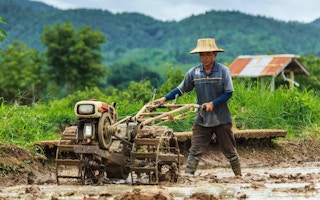Thailand’s government on Friday announced measures worth around $285 million to help desperate rice farmers grappling with drought and low prices for their crop.
Thailand, the world’s second largest rice exporter after India, is facing what some experts say is its worst drought in decades.
That has crimped production but has not pushed up prices as the country has about 12 million tonnes of rice in storage that it is trying to offload, the legacy of a scheme by the previous administration to support rural areas.
Prices have also been hit as the economy slows in China, the world’s top rice importer.
Rice farmers have for months been pressuring the military government to do more to help cushion the fall in prices that has plunged many into debt.
They have also demanded the government do more to manage water reserves across the country that have dipped below 2015 levels.
The measures announced on Friday by the country’s rice management committee are worth around 10 billion baht ($285 million) and include plans to assist farmers in rice production.
The committee said in a statement that 6.76 billion baht of the total would go towards stabilising rice prices through soft loans for farmers who store paddy.
The government-owned Bank for Agriculture and Agricultural Cooperatives (BAAC) will approve loans of up to 300,000 baht ($8,415) to farmers who store rice to curb supply.
Domestic and international demand for Thai paddy this year will stand at around 25 million tonnes, the committee said.
It expects output of 27.17 million tonnes in 2016, compared to an average of about 30 million tonnes of paddy in recent years.
Prime Minister Prayuth Chan-ocha on Wednesday told farmers to grow less rice to help manage limited water resources.










